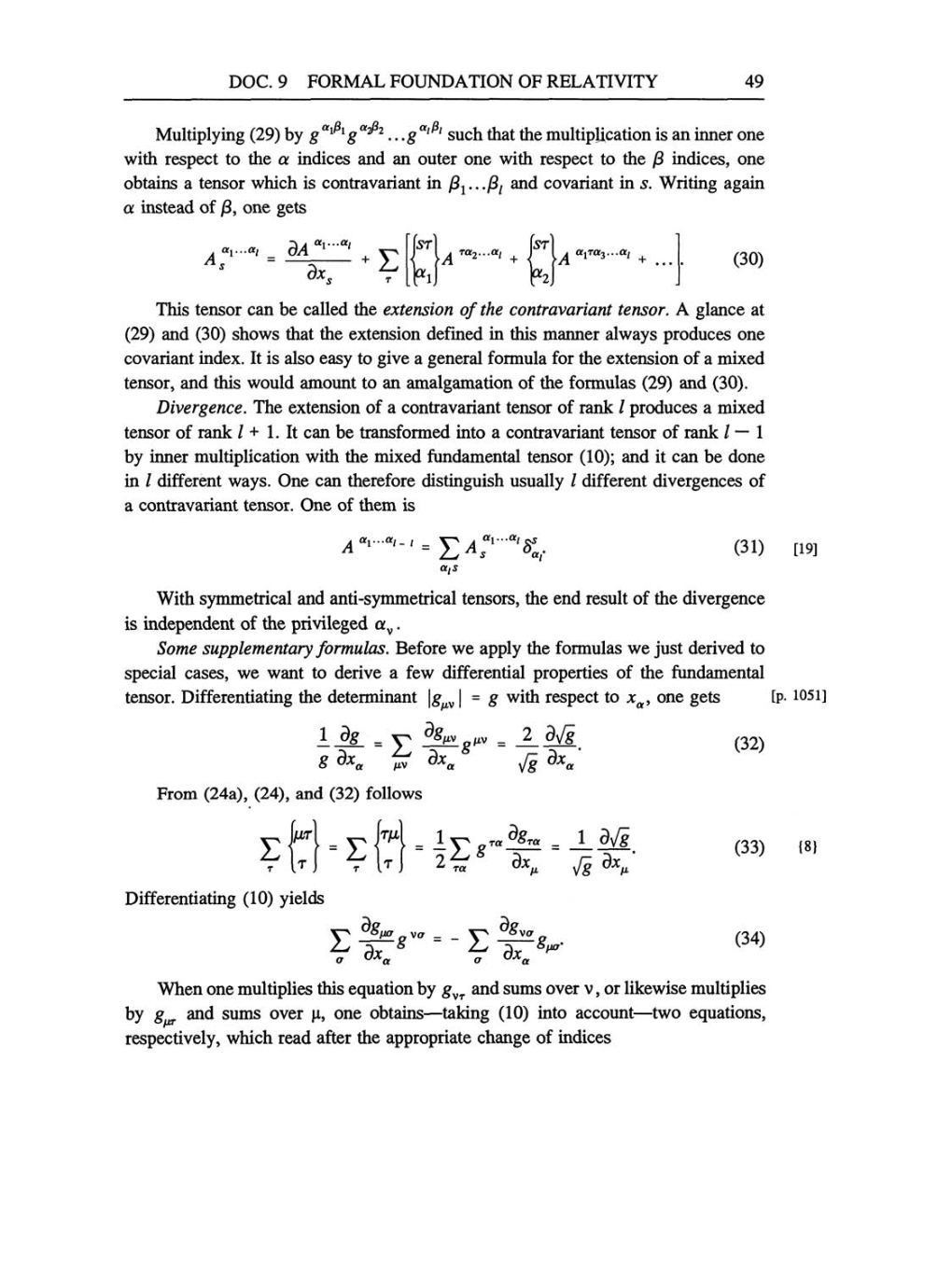DOC. 9 FORMAL
FOUNDATION OF RELATIVITY 49
Multiplying
(29)
by
ga1ß1
ga2ß2... galßl
such that
the
multiplication
is
an
inner
one
with
respect
to
the
a
indices and
an
outer
one
with
respect
to
the ß
indices,
one
obtains
a
tensor
which is contravariant in
ß1...ßl
and covariant in
s.
Writing again
a
instead
of
ß,
one gets
dA
"l-a'
dx
E
rat...a,
+
alra^...al
• • •
(30)
This
tensor
can
be called the extension of
the
contravariant
tensor. A
glance
at
(29)
and
(30)
shows that the extension defined in this
manner
always produces
one
covariant index. It is also
easy
to
give
a
general
formula for the extension
of
a
mixed
tensor,
and this would amount
to
an
amalgamation
of
the formulas
(29)
and
(30).
Divergence.
The extension
of
a
contravariant tensor
of
rank l
produces
a
mixed
tensor
of
rank l
+ 1.
It
can
be transformed into
a
contravariant tensor of rank l
-
1
by
inner
multiplication
with the mixed fundamental tensor
(10);
and it
can
be done
in l different
ways.
One
can
therefore
distinguish usually
l different
divergences
of
a
contravariant
tensor.
One of them is
I
=
(1,~,.
a1s
(31)
[19]
With
symmetrical
and
anti-symmetrical
tensors,
the
end result
of
the
divergence
is
independent
of
the
privileged av.
Some
supplementary formulas.
Before
we apply
the formulas
we
just
derived
to
special
cases,
we
want
to derive
a
few differential
properties
of the fundamental
tensor.
Differentiating
the determinant
|guv|
=
g
with
respect
to
xa, one gets
[p. 1051]
1
dg
_
y
dgMV
_
2
d/g
8
dxa dxa
^
dxa'
(32)
From
(24a), (24),
and
(32)
follows
E
Differentiating (10) yields
=
E
T/ll 1
r-v -2
Es
ra
d8ra
=
1 3yfg
K
fg
K
(33)
{8}
E
dg
dxa
gVO
-
E^r2*
dx
a
UA,a
(34)
When
one
multiplies
this
equation by
gvr
and
sums over
v,
or
likewise
multiplies
by
gur
and
sums
over u,
one obtains-taking
(10)
into account-two
equations,
respectively,
which read
after
the
appropriate change
of
indices
